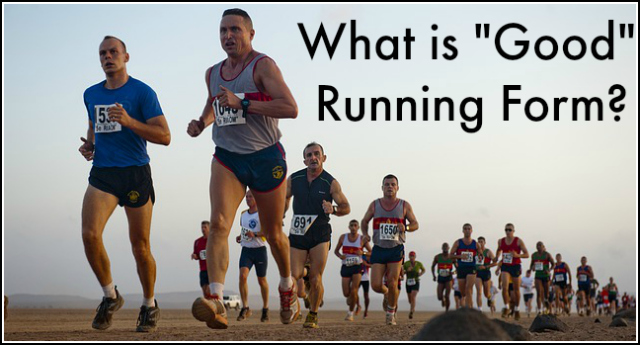Running form is a difficult topic to discuss. And it’s a topic that I’d much rather avoid.

Why do I want to avoid talking about it? A lot of reasons:
- We all have a unique style of running
- You should NOT emulate the form of your favorite runner
- The number of misconceptions about running form is mind boggling
First, get started with these two articles:
How to Run with Proper Running Form (audio interview with Olympic Trails qualifier and coach Jeff Gaudette from Runners Connect)
6 Experts on Running Cues, Fixes, and Technique Changes
Today I have a new episode of Q&A with Coach discussing the best two technique changes you can do for better efficiency.
But before we get to that video, let’s go over a few “Do’s & Don’ts” of good running form.
Tip #1: Don’t Worry About Foot Strike
How your foot contacts the ground is NOT that important. Don’t try to transition to a midfoot strike or (worse) a forefoot strike.
Too many Born to Run evangelists read McDougall’s bestseller and immediately tried to run barefoot on the middle part of their foot.
Podiatrists everywhere rejoiced as their business increased two-fold with the resulting spike in running injuries.
The reason that foot strike has become such a hot topic is because runners want to avoid the heel-smashing, aggressive heel-strike type of foot landing. This is a good thing!
But, you don’t correct an aggressive heel-strike by trying to land on your midfoot. You do so with other form changes (more on this in the video below).
Tip #2: Don’t Obsess About Good Running Form
Not everyone should be actively trying to change their running form. If you have no history of injuries (or just minor issues), it could cause more problems than it solves.
Several studies have shown that modifying your form – if you’re already well-trained – actually reduces running economy.
In other words, if you try to change your form, you could lose efficiency! Nobody wants that.
So if you’ve been running for 3+ years, don’t consider yourself a true beginner, and don’t have any major injury history, then keep doing what you’re doing.
It’s obviously working.
Tip #3: Chi… Pose… Who Cares?!
Chi, Pose, whatever – they’re simply commercial versions of the same thing: good running form.
And they all have problems:
- Chi Running encourages a forward lean, which often causes runners to lean at the waist. This is a huge injury risk and causes you to run slower.
- Pose Running considers gravity a “major propulsive force.” But gravity pulls you down not forward!
Here’s a good litmus test: can you find a good elite coach or college track team that uses a commercial running form style?
I bet that you can’t.
Running Form Q&A
Now that I’ve gotten my rant over with, let’s dive into today’s video and learn more about efficient running form:
This is Episode 12 of Q&A with Coach, where I take your questions from Twitter and answer them on video.
If you’d like to get any of your running questions answered, I’d love to help. Just tweet it to me with the hashtag #RunQuestion. Find me on Twitter here.
As always, thanks for reading and watching.
Recommended Resources:
- Injury prevention e-course (free)
- Tread Lightly: Form, Footwear, and the Quest for Injury Free Running